
Disc arthroplasty, or artificial disc replacement, is a surgical procedure that replaces a damaged, diseased or degenerate intervertebral disc with an artificial disc designed to preserve motion in your neck and lower back.
Artificial Disc Replacement is a motion preservation technique that allows for decompression of the spinal cord and nerve roots and maintains the natural movement and flexibility of the neck and lower back.
Disc replacement is typically performed to avoid fusing a level of the spine, thereby preserving motion, flexibility, and neck/lower back movement, and preventing degeneration at other spinal levels.
Disc replacement offers an alternative to spinal fusion for patients suffering from the symptoms of degenerative disc disease (DDD) of the cervical and lumbar spine. Individuals suffering arm or leg pain, or weakness may also be candidates for disc replacement.
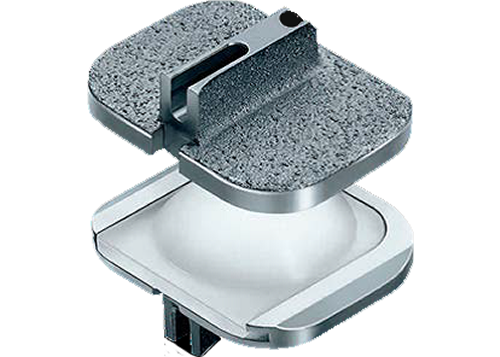
Model of artificial disc replacement. It is a ball and socket implant consisting of two Cobalt Chromium alloy (metal) endplates and a polyethylene (plastic) inlay. The polyethylene inlay snap-locks into the lower endplate and provides the ball that rides in the socket of the upper endplate.
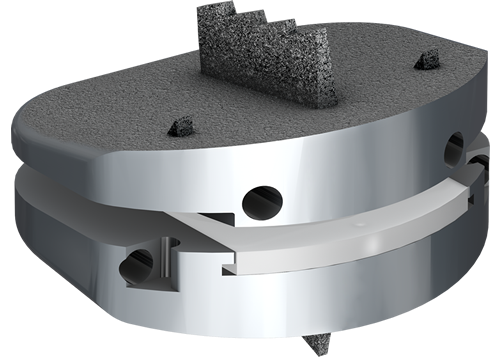
Lumbar disc replacement model. There are also keels (fins) on both endplates that are designed to help hold them in the vertebral bone. The metal surface that are in contact with the bone are also coated with titanium (metal). This coating is designed to help the bone attach to the metal endplates.
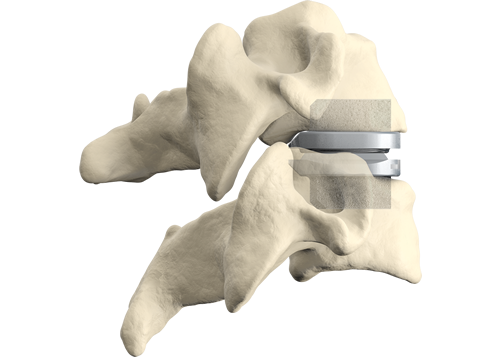
Side view image of cervical disc replacement.
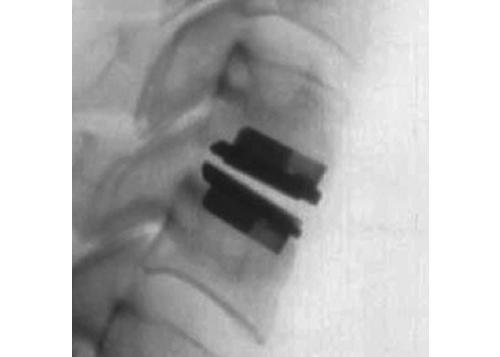
Side view of neck X-Ray with a cervical disc replacement.
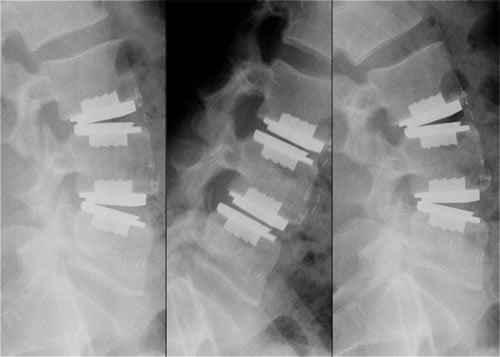
Side view of lower back (lumbar) X-Rays demonstrating motion after surgery in flexion and extension (bending forward and backward).